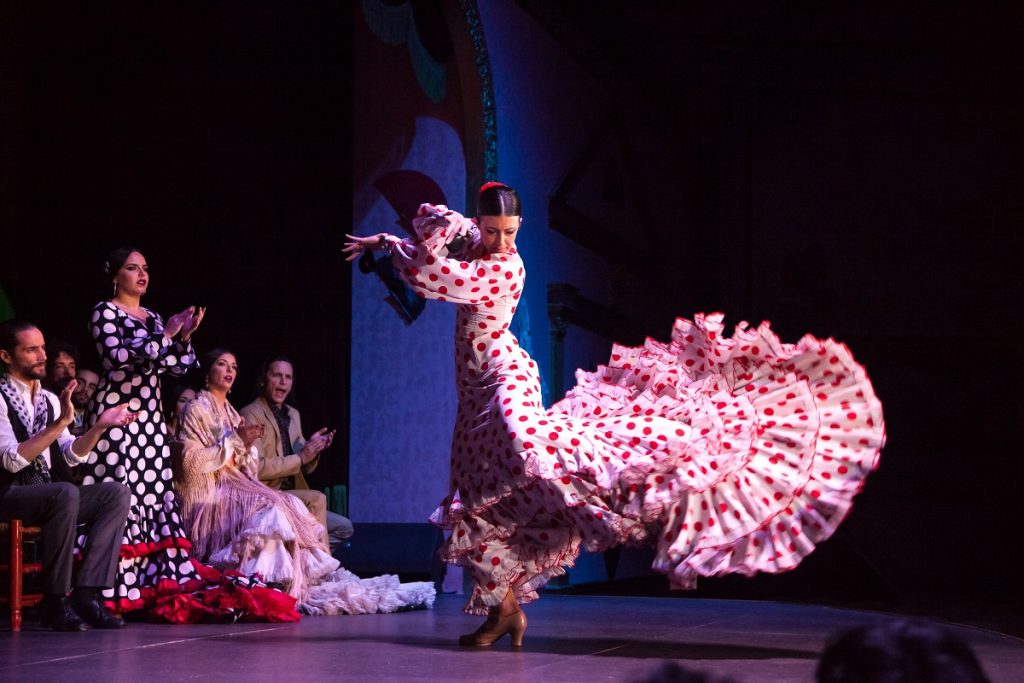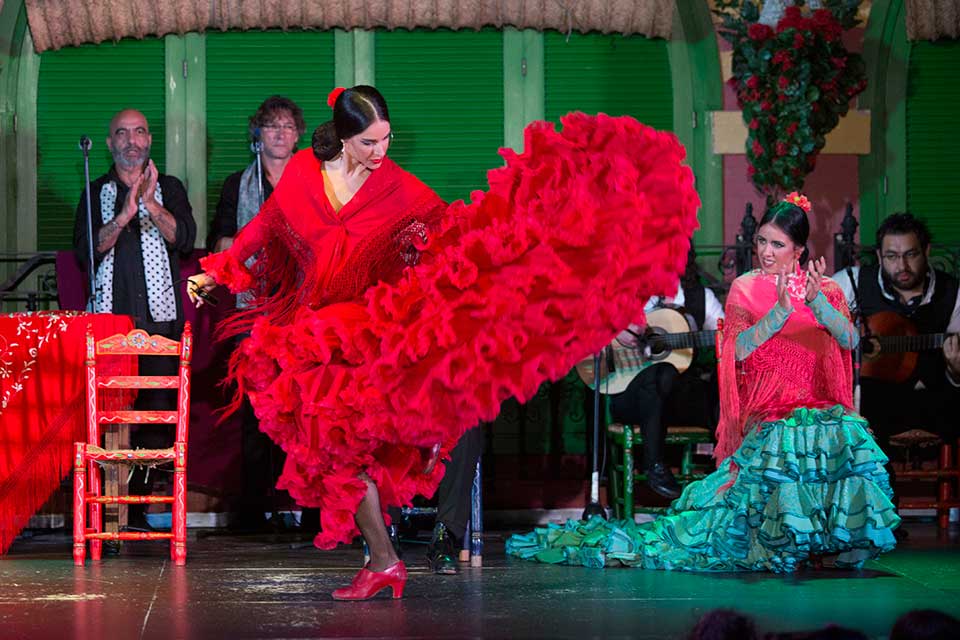
The flamenco long-tailed dress gives flamenco dancing an extra touch of elegance. A complement that dancer women wear and whose movement requires technique and a lot of practice. It was at the end of the 19th century when it appeared in professional dance as part of the clothing that artists used in flamenco shows. Since then, it has been a common element in tablaos.
Without a doubt, the flamenco long-tailed dress embellishes the interpretation of styles such as the caña, alegrías, soleá or seguiriya, styles in which they are most often used, but they are not the only ones. When a dancer masters her movement, the stamp for the viewer is a true wonder.
Although today no one questions the use of this clothing in flamenco, the origin of the long-tailed dress is quite far from the flamenco essence. It started as a fashion among the elegant ladies of high society, but it had little or nothing to do with the clothing that was usually used in flamenco dance.
There is no consensus on the origin of the long-tailed dress and when it began to be worn. What is clear is that this ornament became very popular in high society dresses in the second half of the 18th century. Aesthetically it was very similar to what we know today: body with a round neckline, three-quarter sleeves and the tail dragged behind the dress.
In the last third of the 19th century, the length of the gown was shortened compared to what it is now. It was in Granada, the place where the first long-tailed dress appeared as we know it today.
According to some researchers, and artists such as Matilde Coral, the dancer women were incorporating these tails into their dresses to make the dance more spectacular, coinciding with the proliferation of cafés singers.
It is in the first quarter of the 20th century, when the use of the long-tailed dress in flamenco shows became fashionable, especially thanks to artists such as Pastora Imperio and Antonia Mercé, who incorporated this clothing as something common in their dances.

Given the characteristics of this garment, the dancers need to develop a good technique to move it with mastery during the performance of the dance.
The common length of a long-tailed dress is one and a half meters from the waist, although some dancer women are able to wear them longer. This is the case of artists like Carmen Amaya, who was able to move three meters of tail with unusual dexterity.
This clothing can weigh up to 10 kilograms, so, together with the length, it requires the dancer to have good balance and a lot of skill to move it freely.
When the robe moves, one leg is in the air and the turns are usually fast and dynamic. This requires that the dancer work well on her body balance, but also that she have a good physical preparation and master certain Spanish dance techniques.
That is why not all dancer women are capable of mastering the bata de cola movement and it is usually an exclusive privilege of some artists. Some of those who have known how to shine with ease and popularize its use have been dancers such as Juana Vargas ‘La Macarrona’, who stood out in the dance for the alegrías with long-tailed dress; or Rosario Monje ‘La Mejorana’, who is recognized as the first artist to popularize flamenco dancing with a long-tailed dress.
Given the technical complexity that it has, few artists dare to wear a bata de cola with ease on a flamenco tablao. One of them is Soleá de José, one of the dancers who are part of the cast of artists from El Palacio Andaluz and who dominates, like few others, the handling of flyers while dancing for alegrías, as we can see in the following video.
© 2024 El Palacio Andaluz. All rights reserved.